There are many types of Siamese cats, and they are all lovely pets. Siamese cats are vocal and loyal. So they are great pets for dog lovers too.
If you’re looking for a lap cat that loves to cuddle then the Siamese breed is the pet for you!
Here’s your guide to having Siamese cats as pets:
- Types of Siamese cats
- Siamese cat facts lifestyle
- Personalities of Siamese pet cats
- Health issues with Siamese cats
- Caring for Siamese kittens
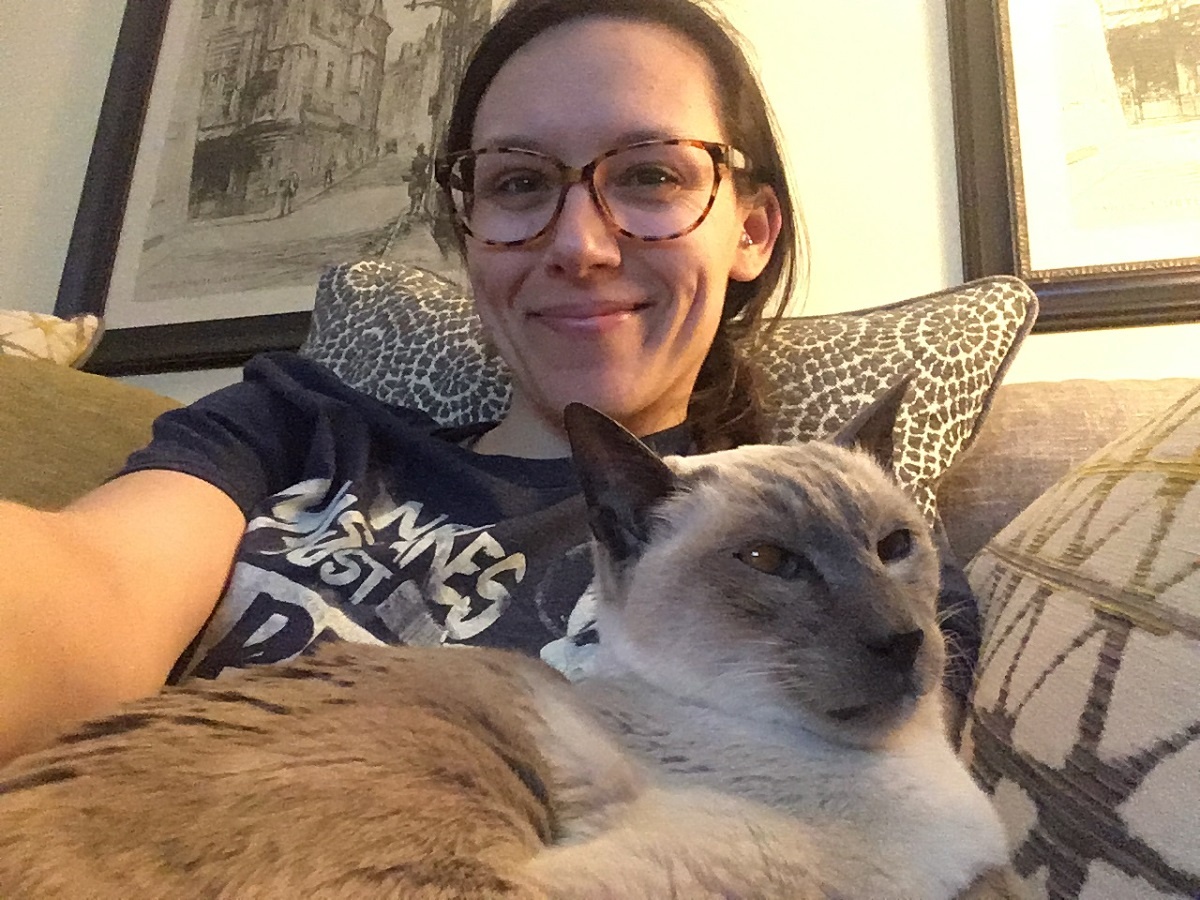
Disclaimer: You (and only you) are responsible for your cat. I earn a commission through affiliate links below. No additional cost to you.
PS – If you’re ready to give your cat a happy life, my Cat Care & Enrichment Binders are for you!
My Cat Care & Enrichment Binders include printable and digital cat care planners, trackers, sitter instructions, medical records, and bonus videos for litter box hacks, how to bond with cats, and how to find a sitter you trust so you can give your cat a happy life.
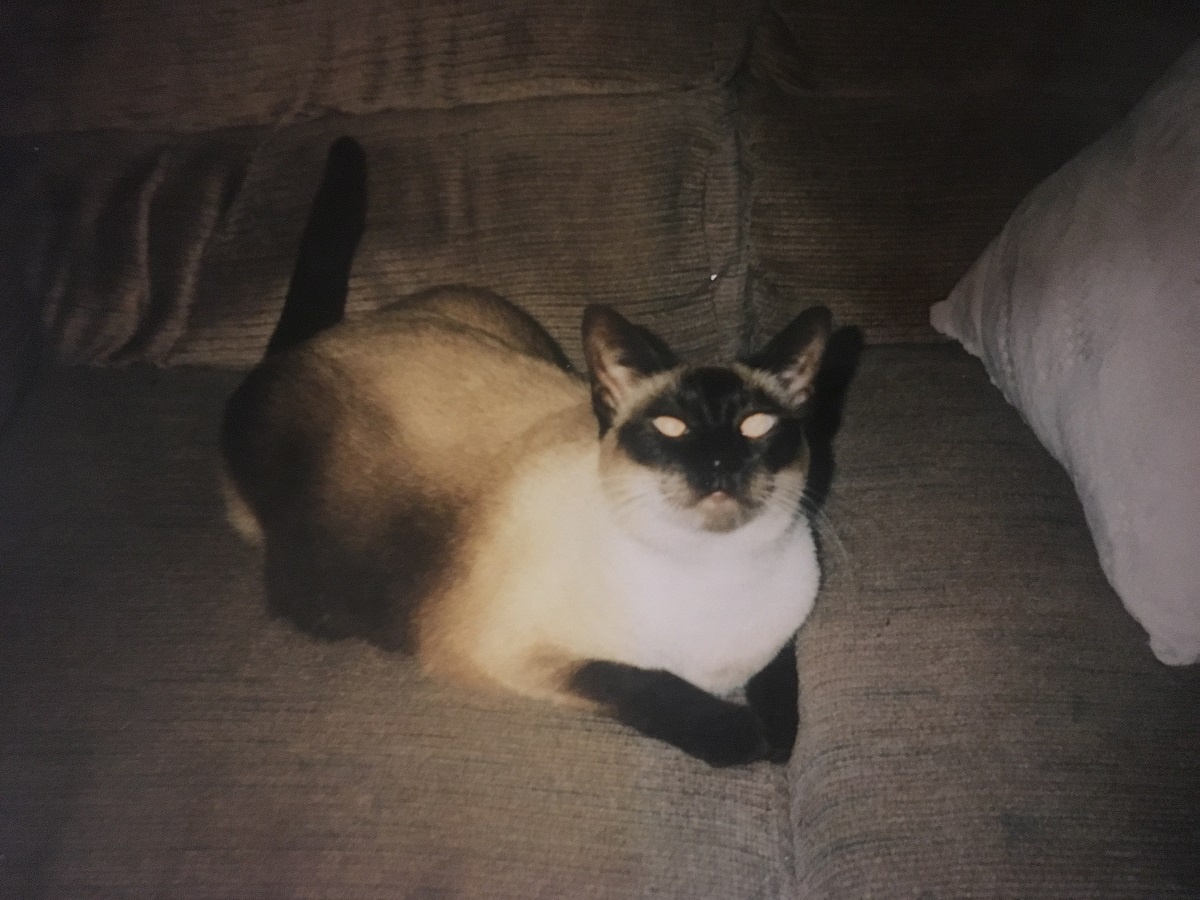
Types of Siamese cats
There are a few different types of Siamese cat breeds. First, they are broken down into two categories: traditional and modern.
Traditional Siamese cats have been around since the beginning. Siamese cats were the first domesticated pets in history.
They originate from Siam or Thailand.
Siamese were coveted by royals. The cats were guards and believed to carry spirits of late royals.
Applehead, Old-Style, and Classic are all traditional Siamese.
Modern Siamese are a popular breed in modern societies. They are categorized as Dark-Colored Points, Wedgies, and Light-Colored Points.
Traditional Siamese
If you’re familiar with Siamese, you know they are very talkative. However, the Applehead Siamese is the quietest of them all.
These cats are less vocal and not as physically active as other Siamese. They have an apple-shaped skull and a shorter tail compared to their traditional counterparts.
Male Appleheads can weigh around 18 pounds. This is almost double the ideal weight of most domesticated cats.
Old-Style Siamese have an elongated face with almond-shaped eyes that are typically crossed. These cats are extremely vocal.
The Classic Siamese are the most athletic of the traditional breeds. They have a lighter and longer body.
Classic Siamese are prone to skin cancer so you’ll have to be wary of UV rays.
Modern Siamese
The Dark-Colored Siamese include Blue Point, Seal Point, and Red Point cats.
Blue Point Siamese are most known for their piercing blue eyes. Typically their fur is lighter with a grey face mask.
Seal Point Siamese are the darkest of this category.
Red Point Siamese are much lighter and typically have orange or dark umber colors around their face, ears, and tails.
The Light-Colored Siamese cats are Chocolate Point, Lilac Point, and Cream Point.
The Chocolate Point Siamese are the darkest of the Light-Colored breeds. You’ll see brown colorations similar to chocolate.
These cats are very intelligent and friendly.
Lilac Points are similar to Blue Point in appearance, but the base colorings are much lighter.
Cream Point cats do not develop any dark spotting. They are similar in appearance to Red Points.
The Wedgie breed has a very distinct look. Their faces are wedge-shaped, and the ears are lower and closer to the face.
Siamese cat facts lifestyle
Each breed is different in terms of lifestyle, personality, and health.
Siamese cats mostly love to cuddle in your lap and steal your warmth.
However, every cat, regardless of breed, also needs mental stimulation and environmental enrichment to thrive indoors.
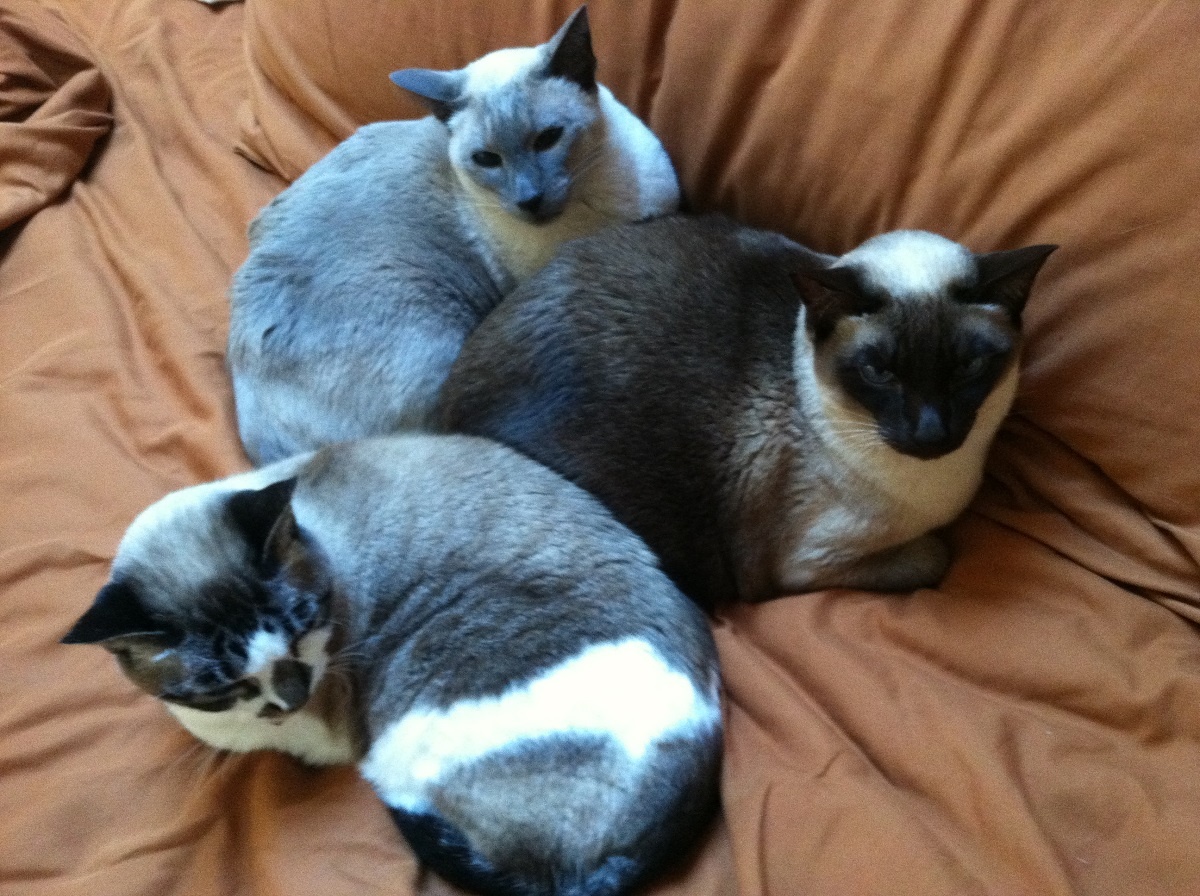
There are many things we can do to make sure our cats are happy and healthy.
What’s the best cat food for Siamese?
Indoor cats are prone to unnecessary weight gain. Especially if they eat dry food only.
A balanced raw diet is more appropriate for our obligate carnivore friends.
Easy homemade cat food: get everything from Hare Today. Meat, bones, and organs chubs. Plus Alnutrin and fish oil supplements.
Check out my homemade cat food guide for help putting it all together.
I also have a 100+ record cat food reviews list for more options inside and outside the US.
What about sleeping all day?
There is also a myth saying cats need to sleep all day.
Wild cats nap often to conserve energy for hunting. But since indoor cats do not hunt, they don’t need to sleep all day.
We should keep this in mind with our cat companions, Siamese or others.
Make sure you spend at least 30 minutes daily playing with your cats.
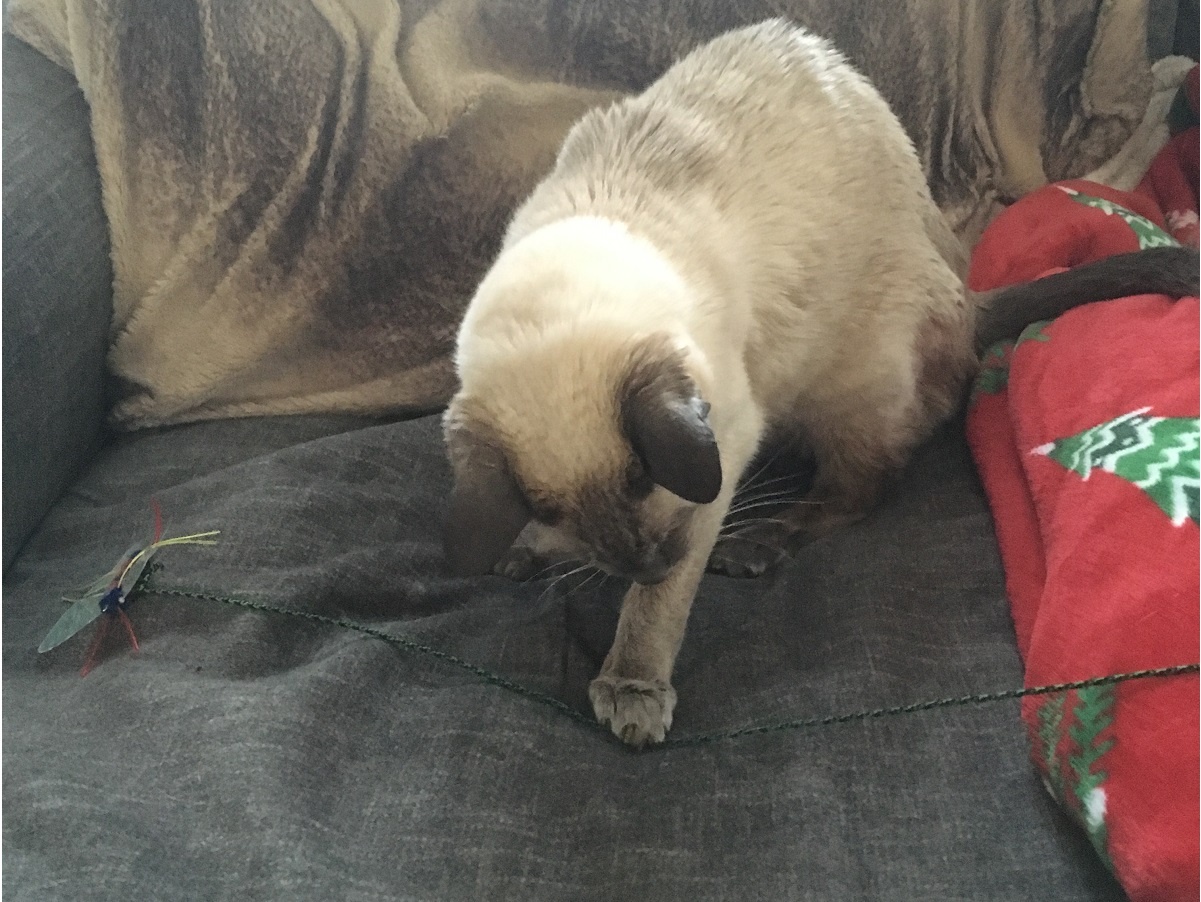
Get engaging toys, be creative, and keep trying.
Check out my lazy cat toys guide to get your cat to play.
Personalities of Siamese pet cats
The most common personality trait of Siamese cats is that they are vocal.
I’ve had 4 Siamese cats in my personal life. And I worked with 3 as a cat sitter.
One of my Siamese, Cocoa, was extremely vocal with me.
He’d meow at me, so I’d meow at him, and he’d meow back. We would carry complete conversations.
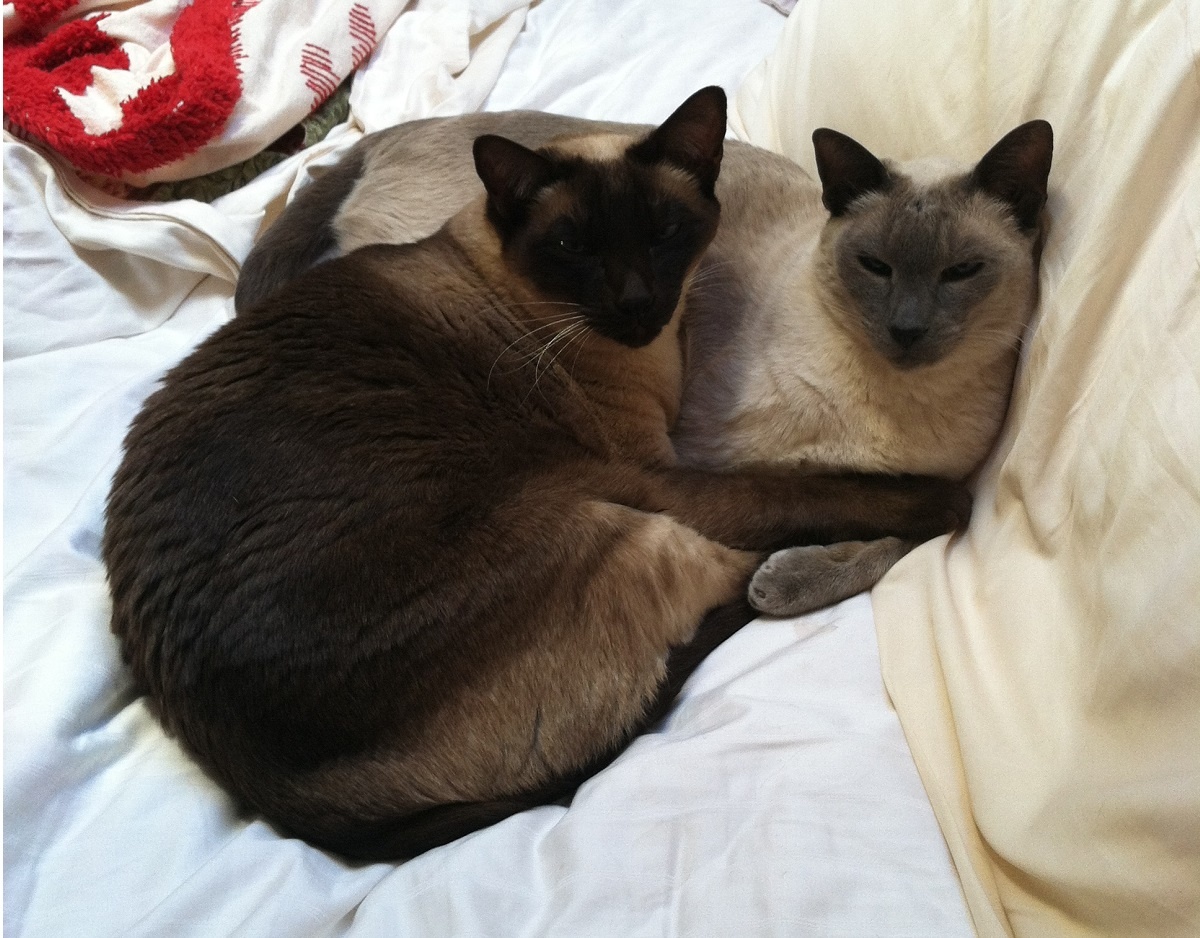
His half-brother, Milo, lived with us too. They were so in love and cuddled all the time.
Milo outlived Cocoa. Poor baby.
Milo became more and more vocal toward the end of his life. We think he was calling out to Cocoa.
Silky, our Siamese mix, would chatter at the birds. She was very loving and affectionate as well.
My experience working with Siamese pets
I worked with two Siamese cats that were both deaf. They were incredibly loud!
Both of them couldn’t wait to sit in my lap for petting and cuddling.
I’ve also worked with a Burmese cat. They are quite similar in appearance.
He loved sitting in my lap for the “spa treatment” brushing and petting. He was very vocal too. The poor guy would cry when I left his home.
You can predict the mood of your Siamese cat based on his meows.
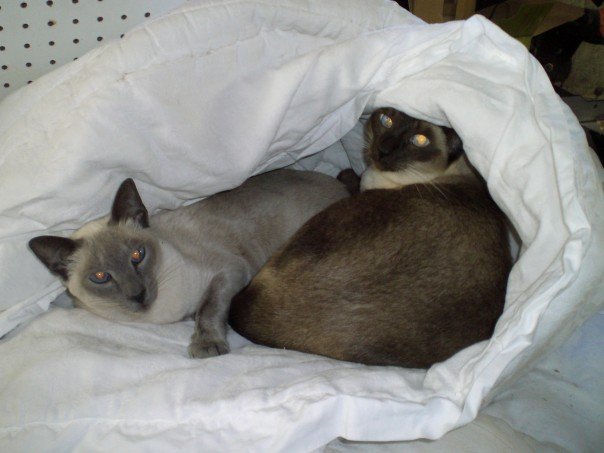
Siamese voices and moods
The Siamese voice will be soft and subtle when he’s in a good mood.
And, as I’m sure you can guess, a sharp and piercing meow means he is angry.
Siamese, and all other cats, can exhibit compulsive behavior, especially when they are stressed.
Cats thrive on routine. Make changes to your home life gradually.
And if you notice a sudden change in your cat’s behavior it’s time to see the vet.
Health issues with Siamese cats
Most cat breeds have similar health issues. But some are specific to the breed.
Dental disease in cats
All cat breeds can develop gum and mouth diseases. This happens from an accumulation of tartar and plaque.
Many will tell you that crunchy food and treats scrape and clean the teeth.
But that would be like your dentist telling you to disregard tooth brushing and eat crunchy granola instead.
Kelp is wonderful at preventing plaque formulation on the teeth.
Check out my dental care guide for more details.

Siamese cat eye issues
You’ll have to keep a close eye on your Siamese cat’s eyes as well.
Some Siamese eyes are oriented in more than one direction. They can develop an eye disorder called Nystagmus.
See your vet immediately if you notice any eye deviation.
These symptoms could be a sign of an underlying issue.
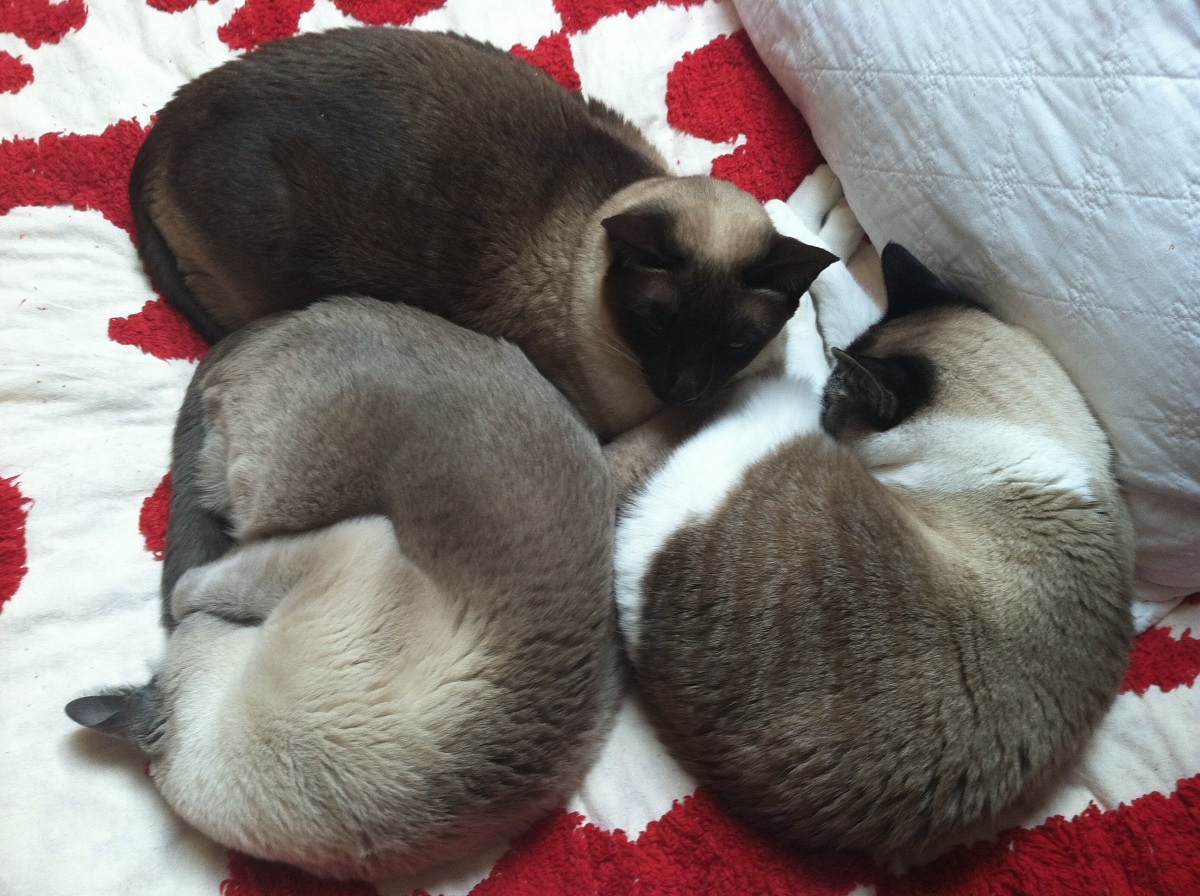
Kidney disease in Siamese cats
Siamese cats are also prone to kidney issues.
Two of my Siamese cats developed kidney issues toward the end.
Again, make sure you feed an appropriate high-moisture diet. And provide fresh, clean water.
Moisture (aka water) is the most important nutrient. Especially for the kidneys.
My Siamese ate a dry kibble diet. This was before I knew the truth about pet food.
Now all of our cats eat high protein low carb wet and raw food.
Inner ear disease in Siamese cats
Siamese cats face a genetic issue that may cause vestibular illness.
This is an inner ear disease that would make your cat lose his balance and tilt his head. Dizziness or disorientation can also occur.
The condition may heal on its own.
But you should always take note of symptoms and see the vet immediately if they continue.
Siamese kittens are prone to respiratory tract infections. This should be monitored by your vet regularly.
Caring for Siamese kittens
Animals of all ages deserve love. But kittens are very special.
Kittens are born with their eyes shut and ears folded over. They rely on mommy’s purrs to get around.
Newborn kittens rely on mommy for everything.
Siamese cats are born white. But by the end of week one, you’ll start seeing color on the ears.
The next two weeks of a kittens life are when they develop senses.
You’ll notice they will gain weight, gradually open their eyes, develop their sense of smell, and start purring.
Their ears will perk up and teeth start to grow.
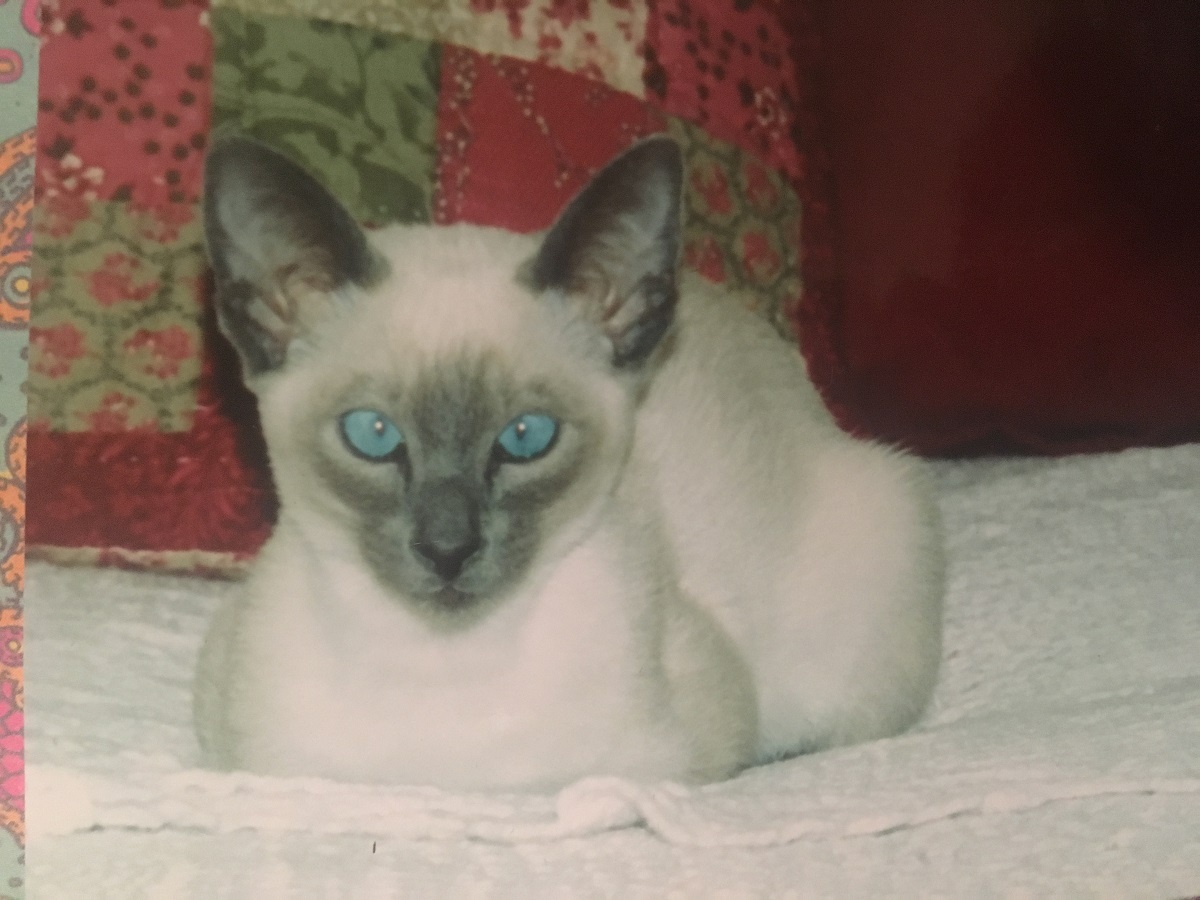
Week three kittens start to show their colorings and markings.
Mommy cat teaches her kittens potty habits in week three as well.
She will groom them to stimulate elimination. Mama cat continues this until the kitten waste is solid.
The fourth week is when kittens start to explore. Their eyes and ears are more erect so they feel more comfortable leaving mom.
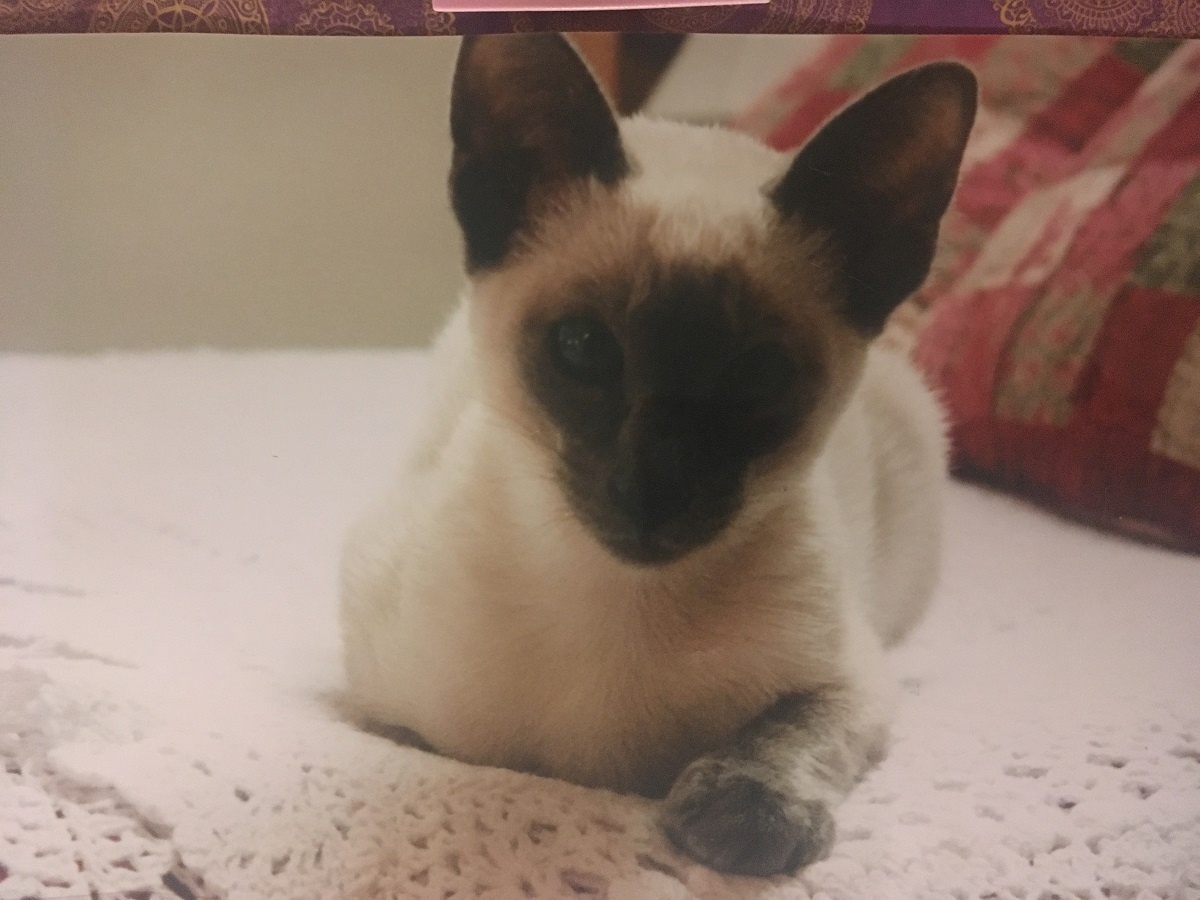
Kittens become more independent throughout the next three weeks.
They will start to rely more on solid foods. And kittens are weaned off completely by the eighth week.
This is when you socialize your kittens with humans.
Kittens are full of energy during this stage. And you’ll notice unique personality traits developing.
Weeks 8-13 you will see more boldness with your kittens. Kittens are ready to fly the coop at the end of this stage.
They no longer look like kittens around 6 months of age.
However, Siamese cats are not considered an adult until two years of age.
Their colorings are dictated by their body temperature, not age.
Tip: Check out my kitten care guide to get ready for your new fur baby.
Final thoughts on Siamese cats as pets
There are many types of Siamese cats, and they are all lovely and affectionate companions.
However, the Siamese breed isn’t for you if you’re looking for a quiet cat.
Siamese cats are very vocal by nature. And it isn’t only when they want food.
They can carry complete conversations with their humans.
All cats need daily exercise and mental stimulation.
If you think cats are easier to care for than dogs, you are mistaken.
Do your research and prepare for your new cat companions properly.
Ready to give your cat a happy and healthy life?
Grab my Cat Care & Enrichment Binders and get the same trackers and planners that 185+ cat parents used to give their cats a fun, enriching, and happy life.
